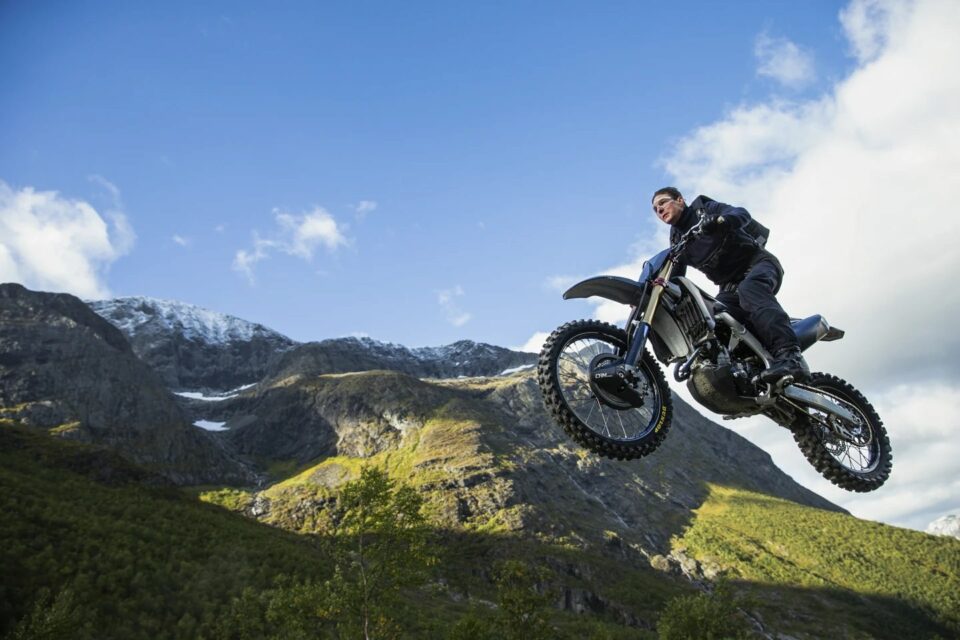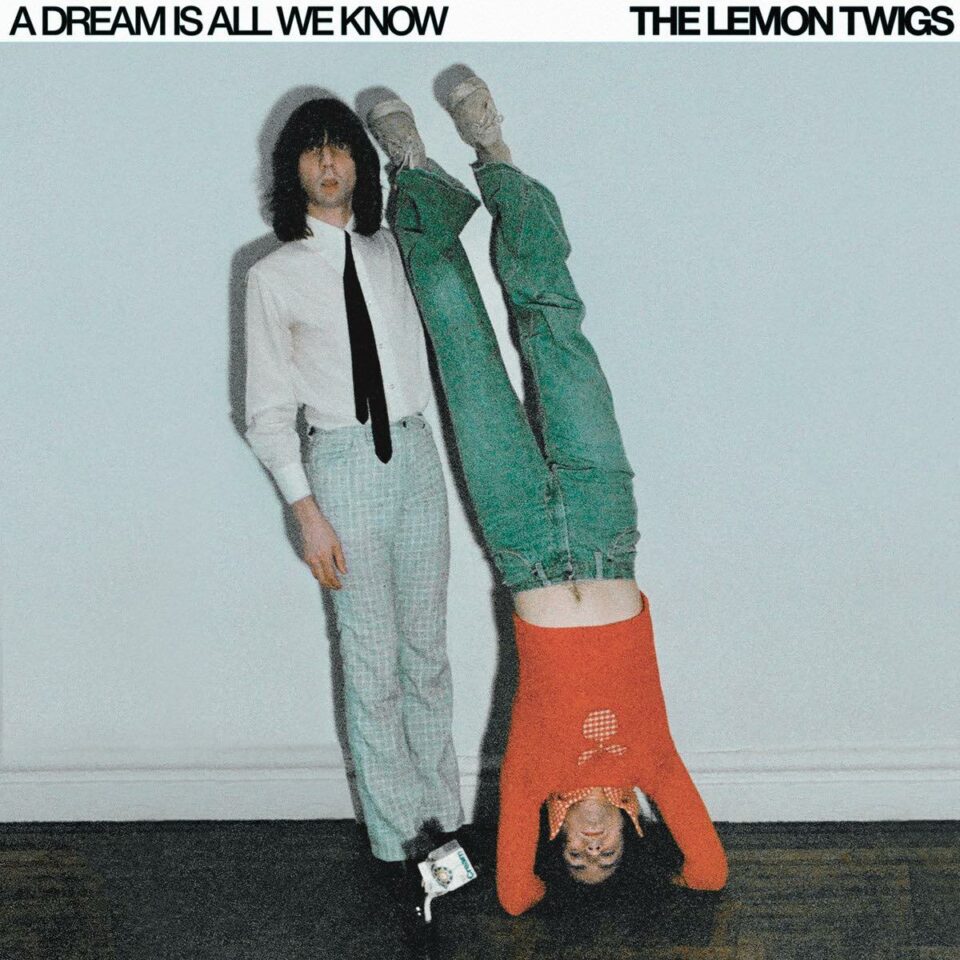Tom Cruise, that wonderful wacko, short in stature yet grand in personality, taunts death for our entertainment. He taunts death because movies reign supreme to him above all else—he worships them with a reverence usually reserved for holy idols (picture him lifting fistfuls of his beloved popcorn to that gaping grin on his unaging face as he basks in the glow of the motion pictures). He races motorcycles through crowded city streets rife with traffic, dangles from helicopters, straps himself to the side of a plane so we can see the ripples undulating across his face as the aircraft rips upward like an arrow and we know why he’s really doing this—he’s doing this for us.
Oh, and he runs; oh boy does he run. The stamina he flaunts in his films—pursuing bad guys across cobblestone streets winding wiry through picturesque European cities chockablock with souls he has to save, leaping from roof to roof and jumping out of windows, absolutely undeterrable—also applies to his career, which has suffered nary a nadir nor a substantial slump in four decades, and he shows no sign of slowing down. In fact, he keeps going bigger. He’ll stop when he’s dead—probably.
Mission: Impossible – Dead Reckoning, the first of a two-part pair that will conclude next year, has been heavily promoted as an event extravaganza, particularly the stunt of Cruise riding a motorcycle up a comically large ramp and off a cliff, parachuting to safety as the motorcycle is obliterated in the rocky quarry below (director Christopher McQuarrie claims that this is the most dangerous stunt they’ve ever tried). Notice how the danger of the stunt is what matters here, the masculine bravado with which Cruise uses his physicality to thrill. We aren’t watching the character (a cipher, really) Ethan Hunt; we’re watching Tom Cruise, not just one of the last vestiges of the marquee movie star era but a physical performer whose corporeal theatrics hark back to the early days of cinema as spectacle, the human body and threats of its destruction as cinematic form, Keaton and Chaplin and Lloyd, a tradition that blossomed again in Hong Kong in the 1980s and ’90s with Jackie Chan and Sammo Hung.
The irony of the Mission: Impossible films is that Cruise risks severe bodily harm for harmless films. There’s nothing at risk for our heroes because they can’t possibly lose.
Cruise is employing techniques that have found success around the world for a hundred years, and in his dauntless pursuit of the magic of the movies he’s found the same cinematic soul that first galvanized anxious audiences a century ago. Think of that spectacular heist scene in Brian De Palma’s original M:I in which Cruise hangs in the quiet clench of silence above an intensely high-tech computer room, as lithe and limber as a ballerina or Philippe Petit. But that scene isn’t the climax, which is instead a more traditional and slightly mundane effects display. De Palma famously wanted to end the film with a mask reveal, an oddly low-key concept for one of American cinema’s great aesthetes, a man who’s never shied away from formal flamboyance (though identity and duality have been pervasive themes throughout his career), but Cruise—now a powerful producer—insisted on a huge set-piece of a helicopter chasing a train.
In the end, they did both (the CG effects of the spectacular crash haven’t aged so gracefully, and feel kind of weird to a modern viewer since Cruise has done much crazier stuff since). Cruise’s inclination is rooted in his love of film, in the sights and sounds and feelings of the pictures, even if the technology wasn’t quite there to bring the vision fully to life yet. Cruise has grown as a physical performer, becoming himself the subject of interest rather than, say, a mangled wad of flaming metal that had just moments earlier been a helicopter chasing Cruise on a high-speed train. Do we refer to Buster Keaton’s characters by name? Or do we think of the films as being about Keaton? The same can be said of the great Hong Kong stars—quick, what’s the name of Jackie Chan’s bibulous character in Drunken Master II?

The irony of the Mission: Impossible films, especially in the Christopher McQuarrie era starting with 2015’s Rogue Nation, is that Cruise risks severe bodily harm for harmless films. There’s nothing at risk for our heroes because they can’t possibly lose: if Cruise and his coterie of altruistic allies fail, the world ends. And that, obviously, can’t happen. And no political provocations or philosophical ideologies are posited. No semblance of reality is allowed to pollute the popcorn magic. The awe of amusement is what matters. We aren’t afraid of whether Ethan will die; we watch to see how far Cruise will go. Ethan and his motley cohorts will never perish because they’re all incorruptible and the good guys always win, but it’s a blast seeing McQuarrie and Cruise concoct increasingly absurd ways to entertain us. The global intrigue of the plot is only there to provide a reason to stage epic stunts whose sole purpose is to wow.
It works because Cruise, the star, the megawatt man, more of a character in real life than in the movies, is doing it rather than someone done up to look like Cruise.
And it works! It works because Cruise, the star, the megawatt man, more of a character in real life than in the movies, is doing it rather than someone done up to look like Cruise. Despite the twisty-turny loop-de-loops of the plot, mask after mask peeled back to reveal Janus faces, it’s Cruise we want to see. It’s not just that the stunts are impressive; plenty of movies have impressive stunts. It’s the clarity with which we see Cruise’s face, the performance he gives with his body, the look of indefatigable determination as his arms pump like pistons, as he leans, almost scraping the asphalt, taking a motorcycle around a curve as bad guys chase him. And McQuarrie shoots it all with clarity and composure, to make sure we see Cruise’s face, which contorts and clenches and moves around just as purposefully as his limbs.
Keaton famously maintained a funereal pallor, big, wide, sad eyes that never flinched, and flat-lined lips while risking life and limb, looking very much like he just might not make it; Cruise is, despite his charisma, never cocky like Harrison Ford, and he never looks like he knows he’ll make it, always with that glint of fear. He’s more like Harold Lloyd scaling the side of a building, except that while he’s climbing it a cadre of terrorist mercenaries are also shooting at him, and he only has 10 seconds to disarm a bomb that’s clipped to the side of a baby stroller perched atop the building on a windy day, and a giant meteor is plummeting right toward him because even God is against him—and we still know beyond a doubt that it will be OK. FL









